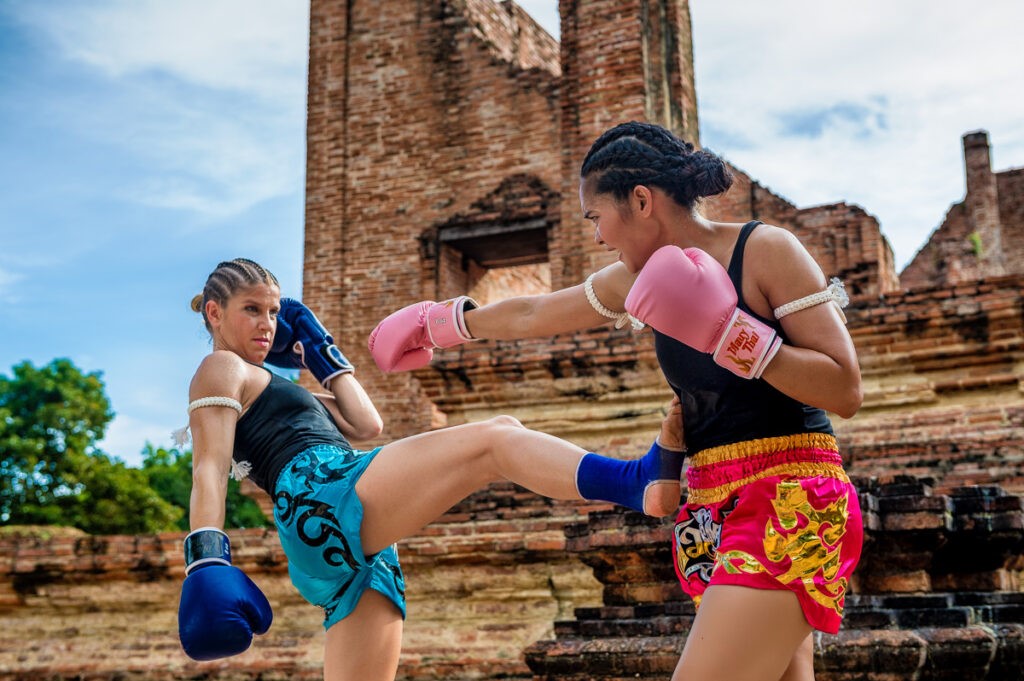Muay Thai Better Than Taekwondo: Martial arts have captivated millions around the world, offering physical fitness, mental discipline, and effective self-defense techniques. Two of the most popular striking-based martial arts are Muay Thai, known as the “Art of Eight Limbs,” and Taekwondo, the Korean art that emphasizes powerful kicks and speed. Each has its own history, philosophy, techniques, and applications. But when it comes to the question — Is Muay Thai better than Taekwondo? — the answer depends largely on the context: self-defense, sport, fitness, or personal preference.
Table of Contents
Muay Thai Better Than Taekwondo: This article compares the two martial arts across various dimensions, helping you decide which might be better for you.
History and Origins
| Martial Art | Country of Origin | Year of Origin | Cultural Significance |
|---|---|---|---|
| Muay Thai | Thailand | 16th Century | National sport of Thailand; used in military |
| Taekwondo | South Korea | 1940s (modern) | Olympic sport; rooted in ancient Korean martial arts like Taekkyeon |
Muay Thai
Muay Thai Better Than Taekwondo: Muay Thai has centuries-old roots in Thailand. Initially developed for battlefield combat, it evolved into a popular sport and is now practiced globally. It emphasizes toughness, conditioning, and full-contact fighting using fists, elbows, knees, and shins.
Taekwondo
Muay Thai Better Than Taekwondo: Taekwondo is a relatively modern martial art developed in post-World War II Korea. While it has ancient influences, its modern form was standardized in the 20th century. It became an Olympic sport in 2000 and is practiced by millions of students worldwide.
Techniques and Style
| Aspect | Muay Thai | Taekwondo |
|---|---|---|
| Striking Points | Fists, Elbows, Knees, Shins | Primarily Legs (feet, shins), some hand strikes |
| Kicks | Low, powerful roundhouse kicks | High, fast spinning and jumping kicks |
| Punching Style | Western boxing-style combinations | Basic punches, not heavily emphasized |
| Clinching | Extensive clinch fighting with knees | Minimal clinch work |
| Defensive Style | Blocking, checking, clinching | Dodging, footwork, blocking |
Taekwondo, on the other hand, is renowned for its dynamic kicks — particularly spinning, jumping, and head-level kicks. It emphasizes speed, agility, and scoring points with clean, precise strikes in a controlled setting.
Sport vs. Self-Defense
| Category | Muay Thai | Taekwondo |
|---|---|---|
| Self-Defense | Very effective at close range | Moderate, effective at long range |
| Ring Effectiveness | Proven in kickboxing and MMA | Mostly Olympic-style competitions |
| Street Application | High practicality | Less practical in real street fights |
| Sparring Style | Full-contact, realistic sparring | Point-based, semi-contact sparring |
In self-defense scenarios, Muay Thai has a clear edge due to its emphasis on realistic, full-contact training. The ability to use elbows and knees and to fight in the clinch makes it extremely effective in real-world situations.
Taekwondo, while less effective in street fighting due to its sport-oriented ruleset, can still be useful — especially for its speed and surprise factor with kicks. However, its point-based sparring does not typically prepare practitioners for prolonged or chaotic self-defense situations.
Fitness and Conditioning
| Metric | Muay Thai | Taekwondo |
|---|---|---|
| Cardiovascular | Excellent | Very good |
| Strength Building | High (focus on legs, core) | Moderate |
| Flexibility | Moderate | Excellent |
| Weight Loss | Very effective | Effective |
| Injury Risk | High (due to full contact) | Lower (due to light contact) |
Muay Thai training is physically grueling. Fighters undergo intense conditioning routines including running, skipping, heavy bag work, pad drills, clinching, and sparring. This makes it ideal for those looking to improve their endurance, strength, and mental toughness.
Competitive Opportunities
| Competition Type | Muay Thai | Taekwondo |
|---|---|---|
| Amateur Tournaments | Yes | Yes |
| Professional Leagues | Yes (Lumpinee, ONE, etc.) | Limited (mostly Olympic style) |
| Olympic Sport | No | Yes |
| Crossover to MMA | Very successful | Limited success |
Taekwondo is recognized as an Olympic sport, giving it a global platform. Competitors train for point-scoring techniques, speed, and precision.
Muay Thai is not an Olympic sport (though efforts are underway), but it has extensive professional circuits. Many elite kickboxers and MMA fighters (such as in the UFC) have Muay Thai backgrounds due to its effectiveness in striking.
Learning Curve and Accessibility
| Factor | Muay Thai | Taekwondo |
|---|---|---|
| Beginner-Friendly | Moderate | Very beginner-friendly |
| Cost of Training | Moderate | Moderate to low |
| Availability | Widely available worldwide | Very widely available |
| Belt System | No (uses fight experience) | Yes (colored belt rankings) |
Taekwondo tends to be more structured and family-oriented, with a clear belt progression system that helps motivate younger students. It’s often taught in after-school programs or community centers.
Muay Thai gyms are generally more informal, and progression is marked through fights and personal improvement rather than colored belts. It may be more intimidating for beginners but offers very practical training.
Which One Is Better?
Ultimately, “better” depends on your goals:
| Goal | Recommended Martial Art |
|---|---|
| Self-defense | Muay Thai |
| Competitive sport (Olympics) | Taekwondo |
| MMA preparation | Muay Thai |
| Flexibility and agility | Taekwondo |
| Full-body conditioning | Muay Thai |
| Child-friendly environment | Taekwondo |
Muay Thai is often regarded as more practical and effective for real-world fighting, thanks to its use of multiple striking points, close-combat skills, and rigorous training. It’s the go-to martial art for those interested in self-defense, fitness, and competitive combat sports like MMA.
Taekwondo shines in athleticism, discipline, and sport-oriented achievement. Its structured progression system and Olympic status make it appealing to children, teens, and those seeking a less combative but still powerful martial art.
So, is Muay Thai better than Taekwondo? For pure fighting and practicality — yes. But for sport, discipline, and accessibility — Taekwondo has its merits.

